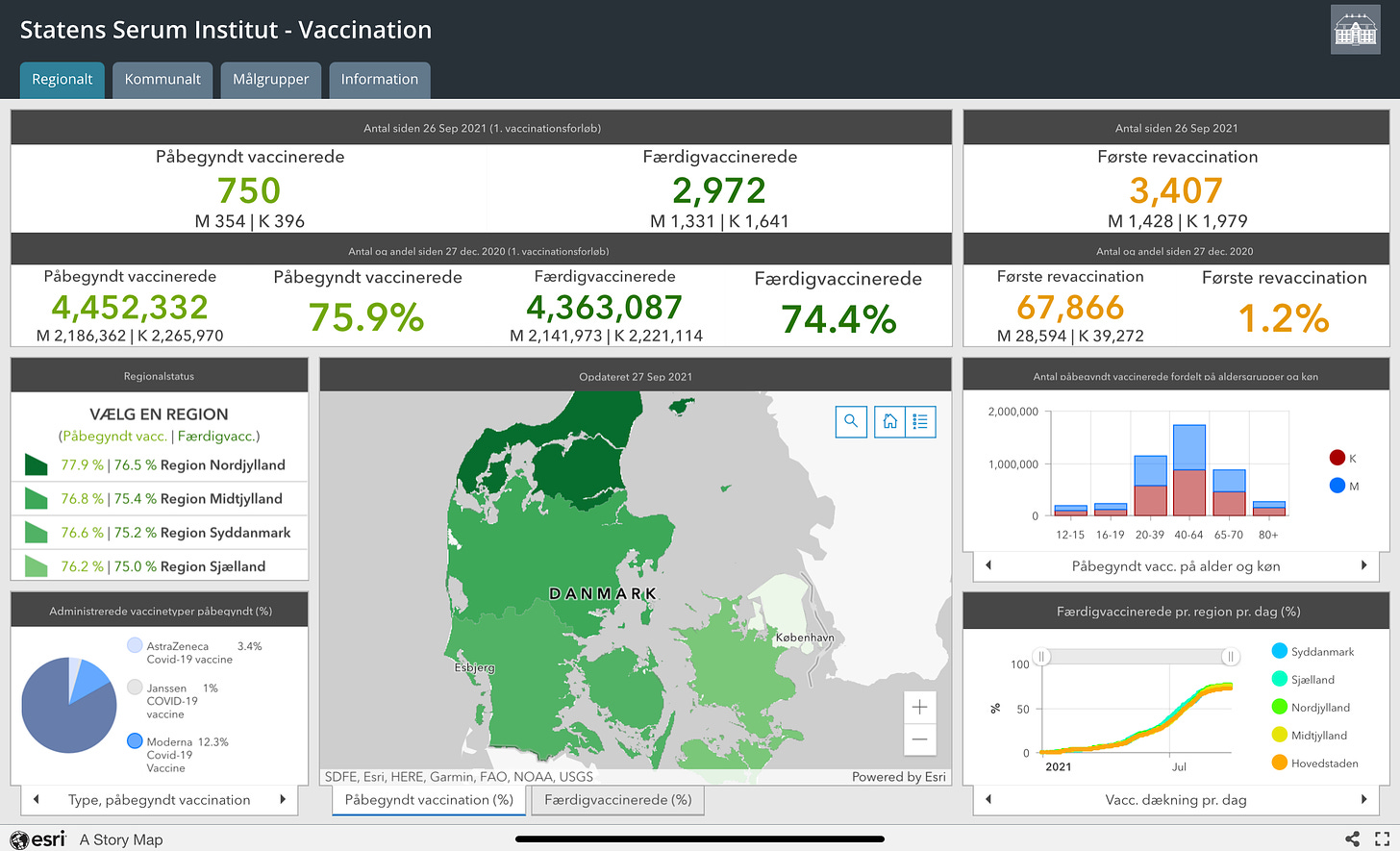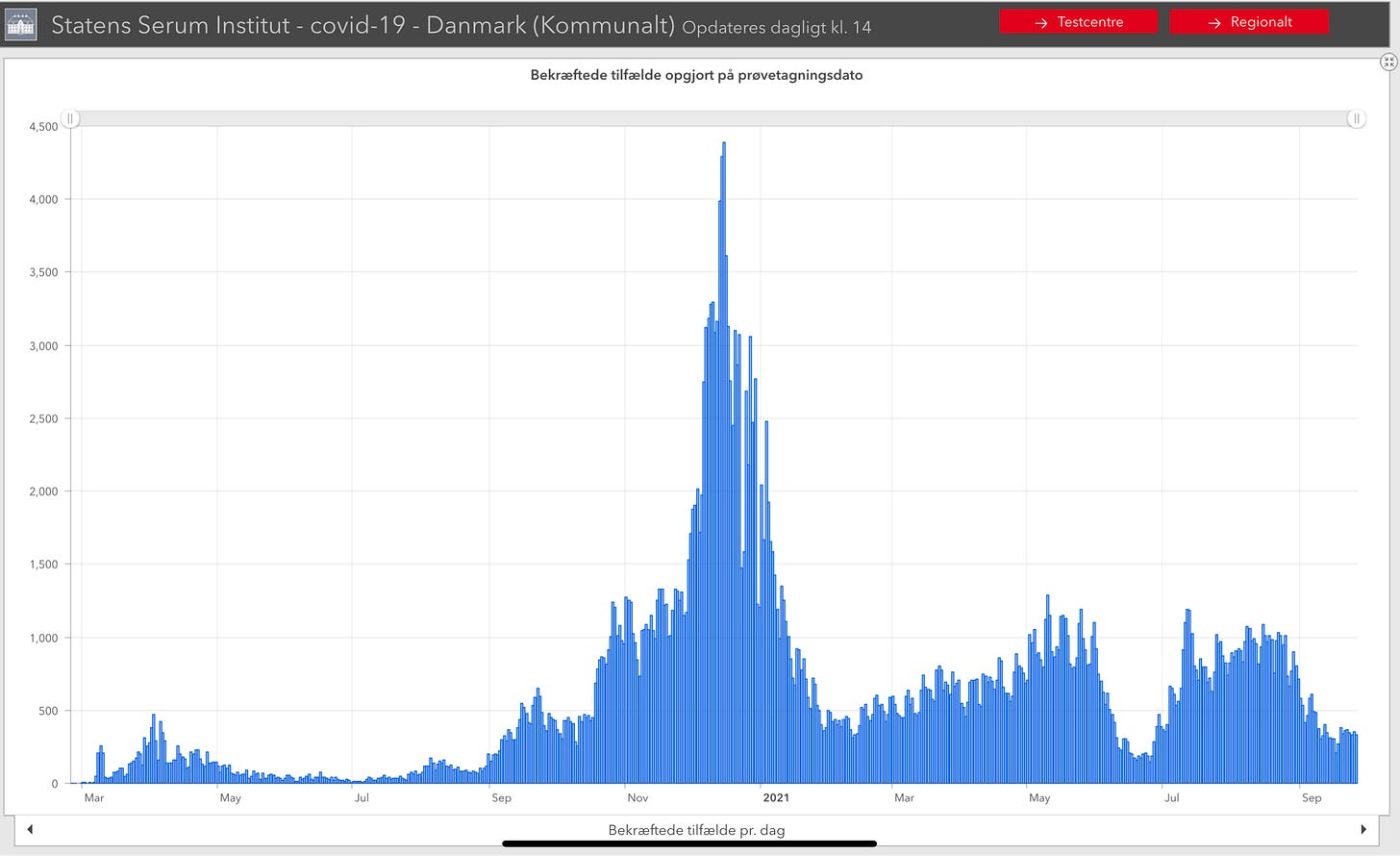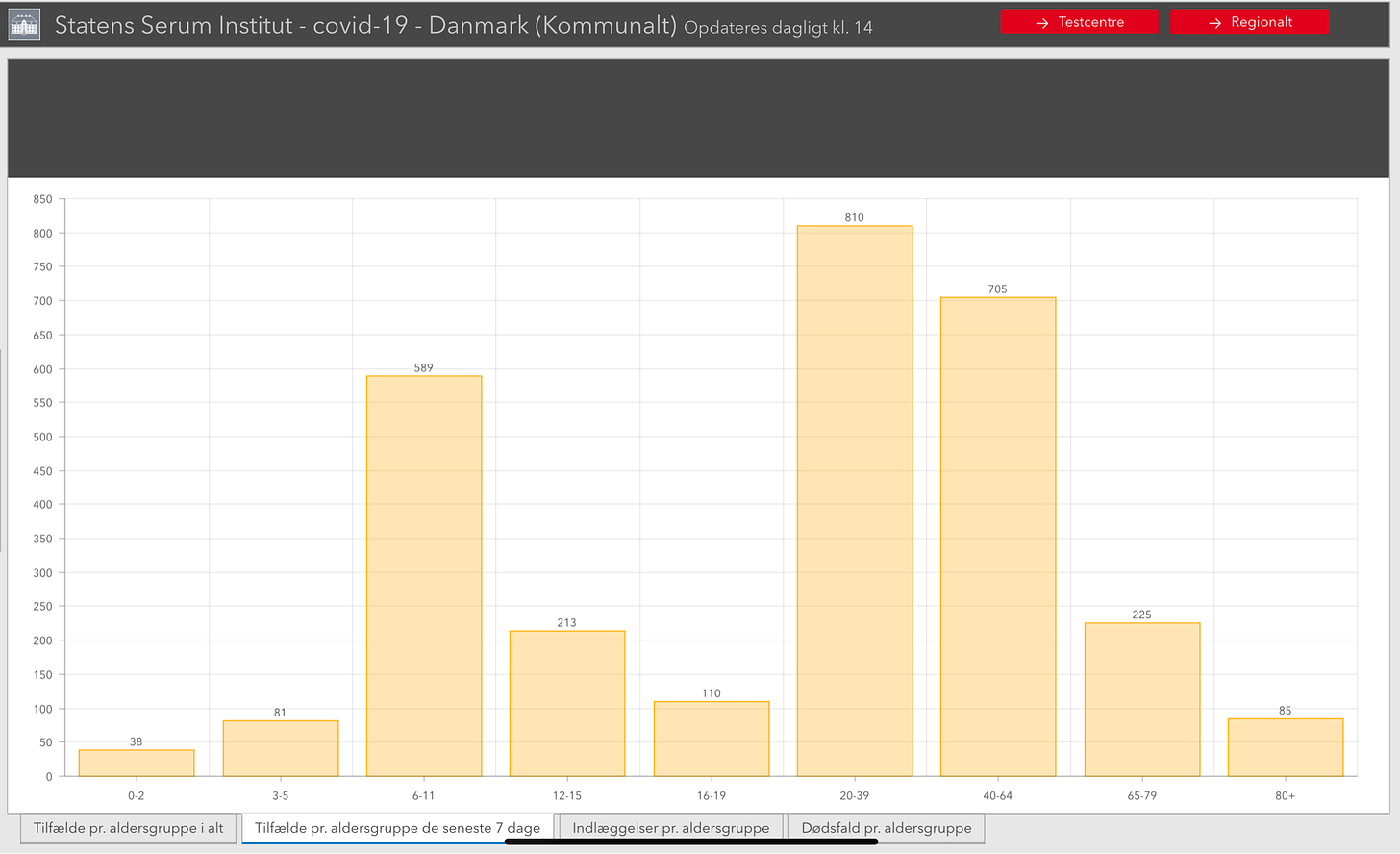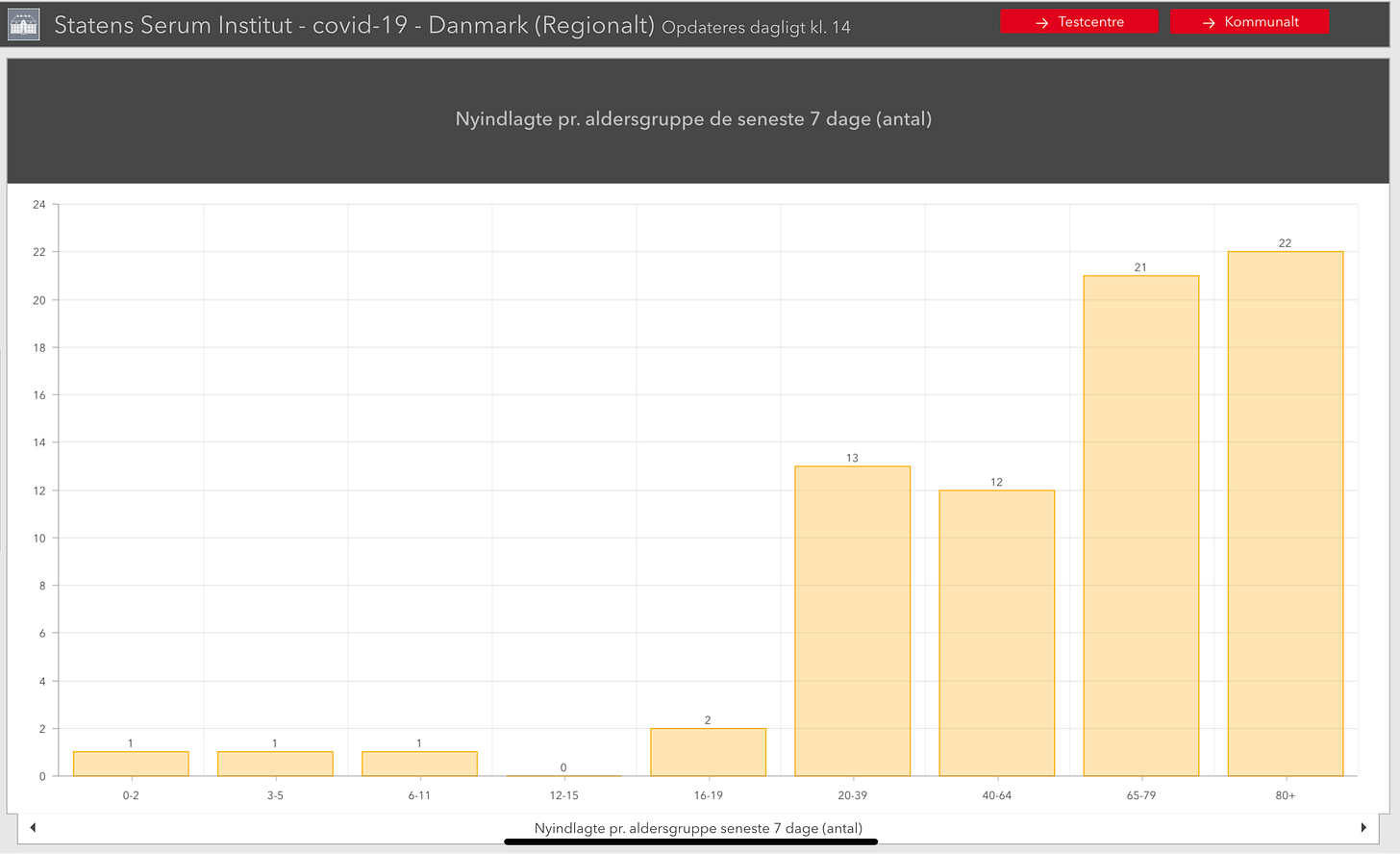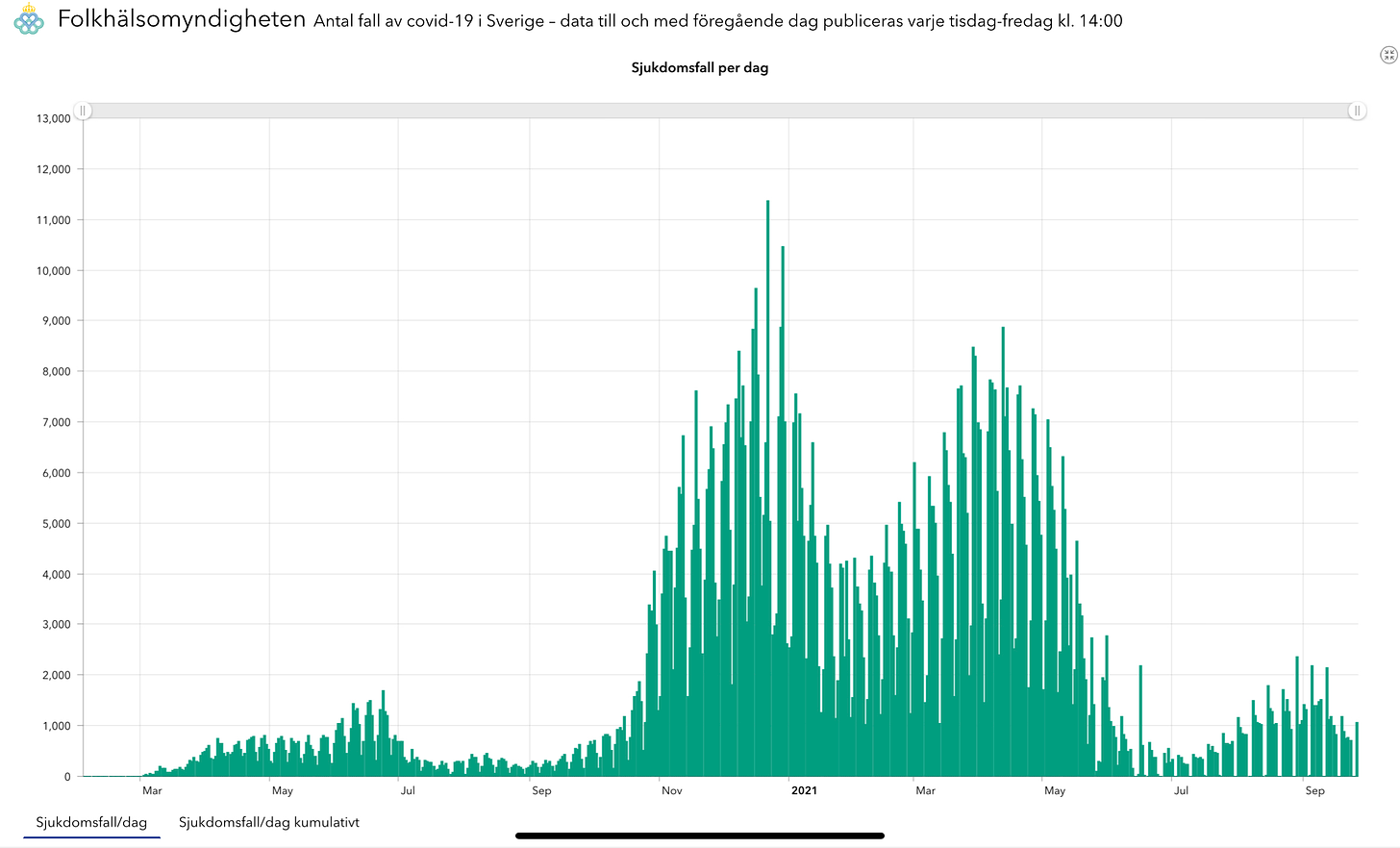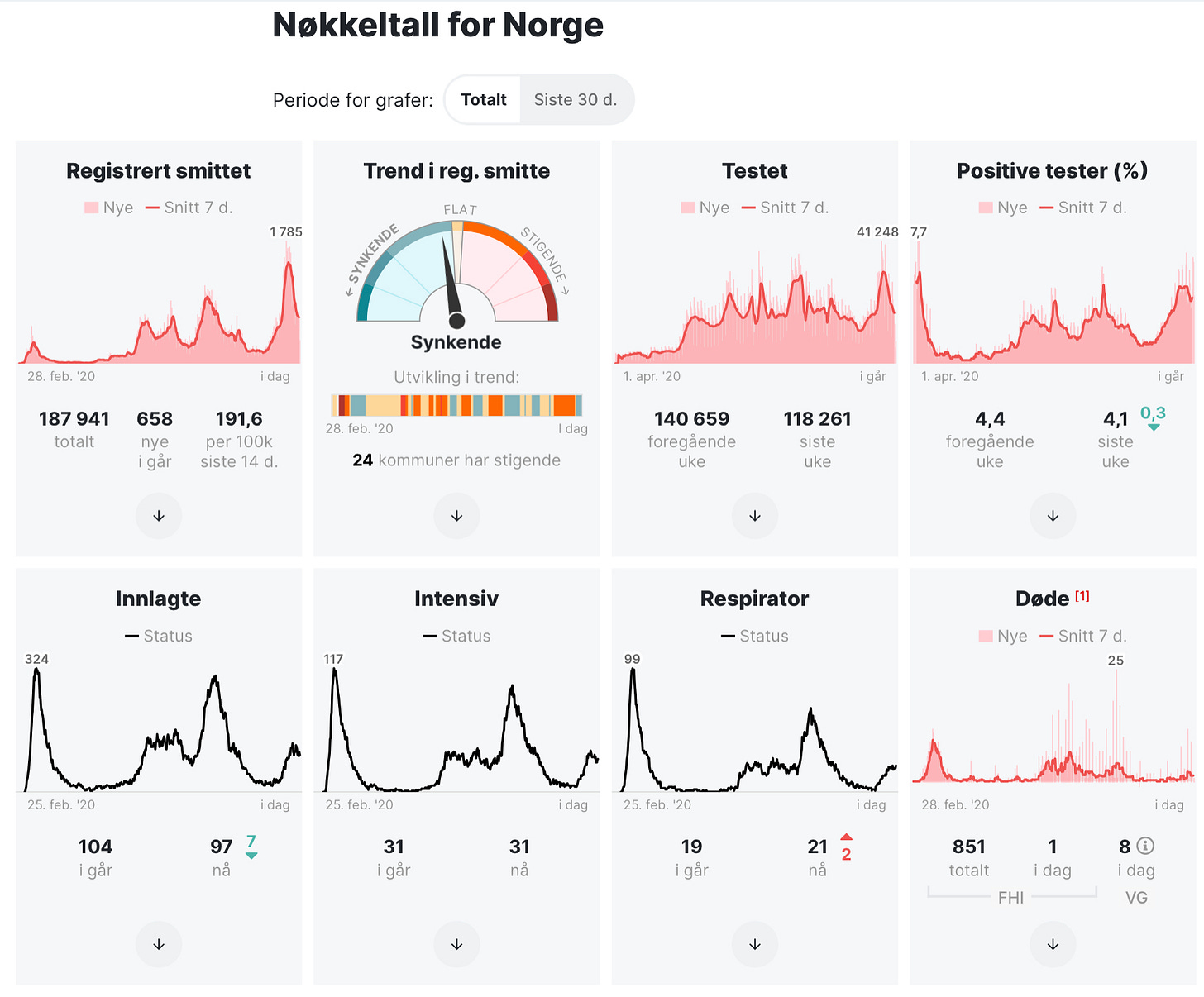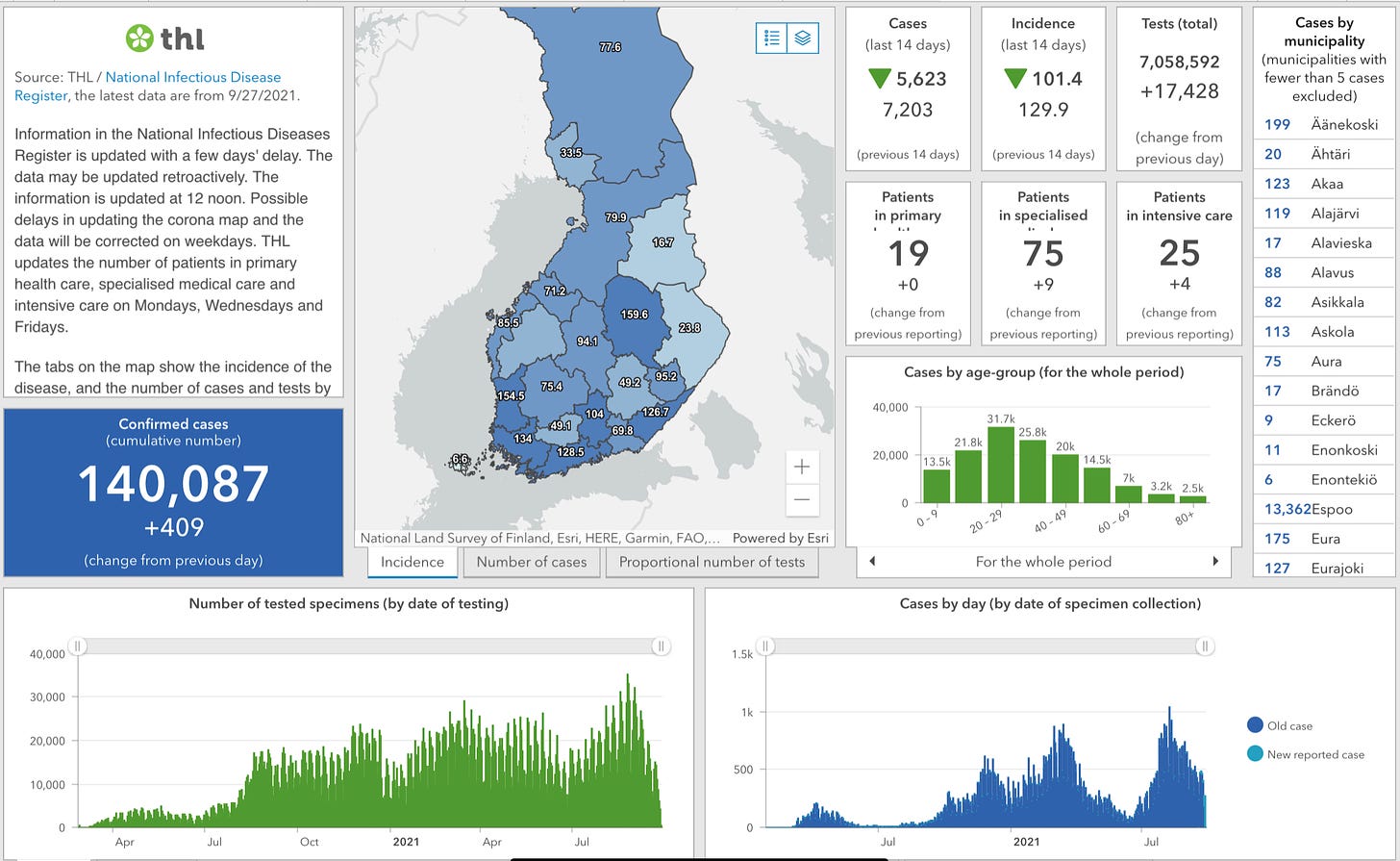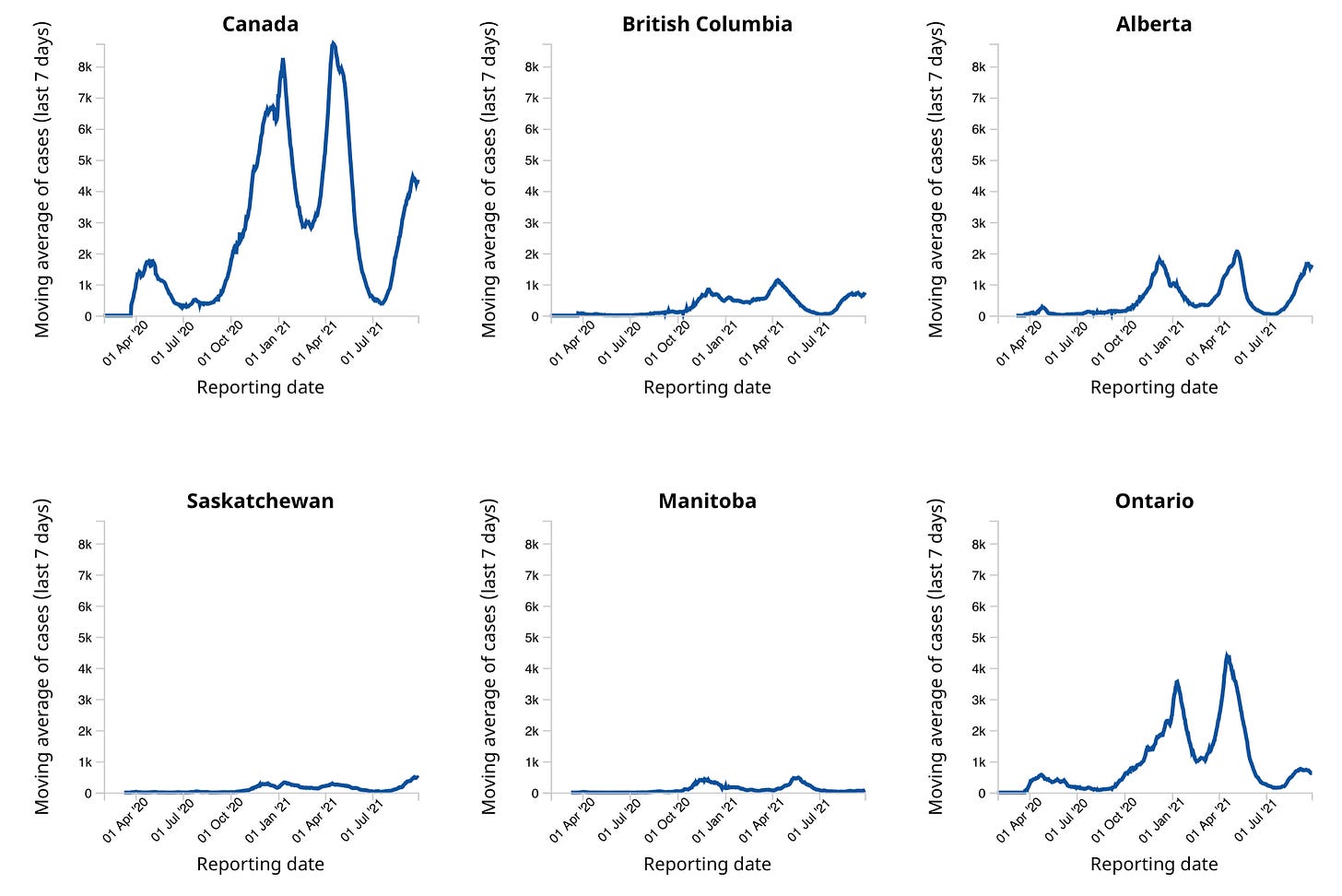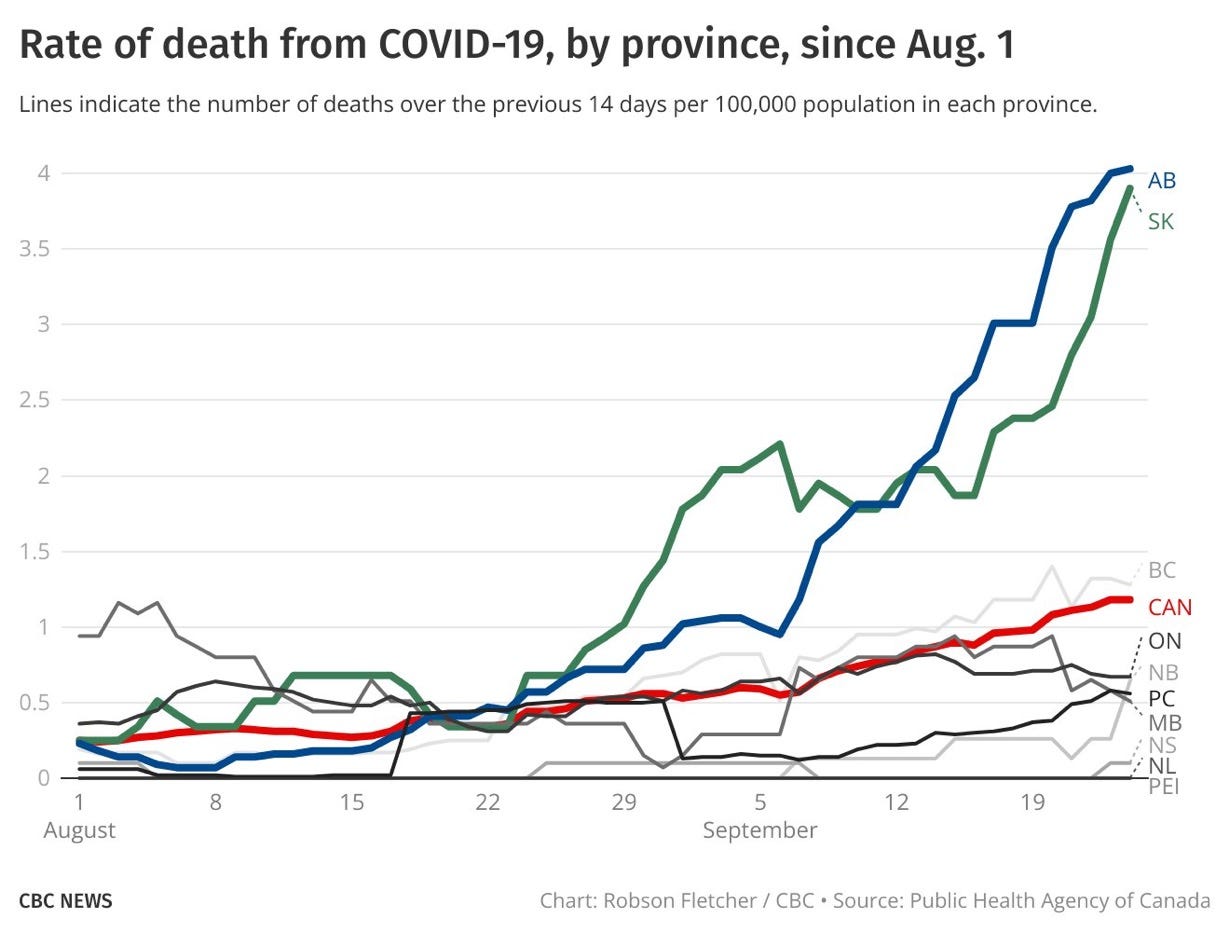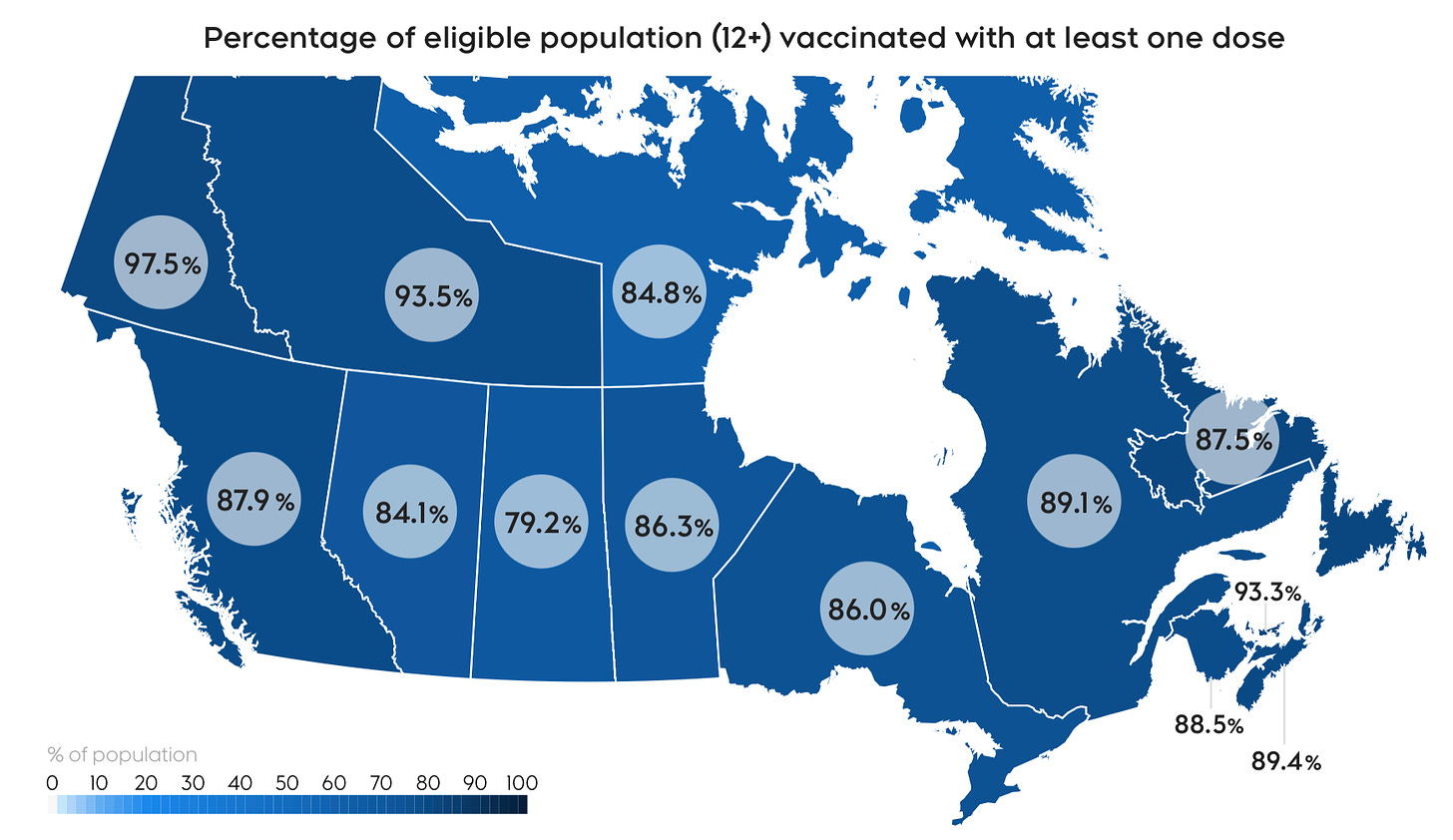🇩🇰
After three weeks of a declining epidemic situation in Denmark with a COVID contact number (reinfection rate or R0) of 0.7 that number has jumped upward. Health Minister Magnus Heunicke says the R0 is now 1.1 indicating “that the decline in the epidemic has stopped and that we are now in a stable or slightly rising epidemic.” Heunicke says “other key figures” also confirm that we are no longer in a declining epidemic situation.
Health Minister Magnus Heunicke also announced today that the booster shot program is being expanded as of October 1 to include all seniors 85 years old and older.
Currently, a third dose is only offered to vulnerable populations and seniors in care.
“Data shows that immunity is declining in the elderly, and since coronavirus is still present in our society, it remains important that we protect our most vulnerable citizens.”
As well, Heunicke announced that anyone who has been vaccinated with the one-shot Johnson & Johnson vaccine can now get a 2nd dose of an mRNA vaccine. He says data shows that the J&J vaccine offers less protection than Pfizer/BioNTech or Moderna.
The National Board of Health says its booster shot campaign will happen in phases with phase one being vulnerable populations and seniors in care. Phase two begins with seniors 85 years old and older. The next phase will see seniors 65 years old and older, healthcare staff, and senior care employees a third dose.
The Sundhedsstyrelsen says the timing of the booster dose campaign is crucial. One one hand, it says, booster shots shouldn’t be given out “for no reason” but also they can’t be administered too late when immunity is waning and infection risk rises.
The health board says it is likely that everyone will have to get a booster shot, but that won’t happen “until 2022 at the earliest”.
Deputy Director Helene Probst:
“Fortunately, we have some really effective vaccines in our program, which protect the vast majority of people vaccinated against serious illness as a result of COVID. However, there are some of the elderly aged 85 and over who may have had a lesser effect from their primary vaccination due to their age, and who have also been fully vaccinated for some time, and who also have an increased risk of developing more serious illness. We want to be absolutely sure that we get them good protection, and therefore we believe that the time has come to offer the very oldest booster dose.”
The national health board says that it expects both Pfizer/BioNTech and Moderna will be approved for a broad re-vaccination effort in October.
The booster shot campaign will run just like the initial vaccination effort, with people getting an invitation to get a third dose in their encrypted government email (eBoks) inbox.
-
The Staten Serum Institut has provided a fresh update on the number of breakthrough infections since Denmark began its vaccination campaign. So far, there have been 12,195 fully vaccinated people (0.28%) who have tested positive for COVID, of which 518 (0.01%) have been hospitalized and 86 (0.001%) have died.
CEO Henrik Ullum:
“Overall, a low but increasing number of breakthrough infections have been found. It is as expected when the total number of fully vaccinated people in the population increases.”
The SSI reports that for some reason breakthrough infections seem to be occurring slightly more (53%) among women than men.
-
On the vaccination front to date, enough 1st vaccine doses have been administered to cover 75.9% of the total population while 74.4% are fully vaccinated.
67,866 booster doses have been administered so far.
Yesterday there were 7,129 total inoculations done, of which just 750 were 1st doses.
-
An expert group on COVID has run a number of possible scenarios trying to anticipate COVID developments over the next few months in Denmark. While all scenarios paint a picture of stagnating infection activity in the coming weeks followed by increases beginning after that. However, the panel notes, long-term forecasts are fraught with uncertainty.
Expert Group Chair Dr. Camilla Holten Møller:
“Even minor persistent changes in the activity of the population are of great importance for the development of the epidemic. Similarly, vaccination adherence is also an important factor. This is especially true for the expected number of new [hospital] admissions in the autumn.”
The expert group notes that the best modeling outcomes all depend on vaccinations reaching in excess of 90% across all target groups. Short of that, the modeling shows infection activity will increase again. But there are too many variables to paint an accurate picture. The variables include vaccination coverage, the seasonal affect, Delta variant impacts, and any consequences of lifting all COVID restrictions in Denmark.
-
Denmark is reporting 457 infections and six more coronavirus deaths in the last day.
Yesterday there were 72,562 total corona tests done, 35,160 PCR and 37,402 rapid, for a (PCR only) positivity percentage of 1.30%.
-
The Staten Serum Institut has tweaked its COVID infection numbers, reporting to offer a further breakdown of coronavirus activity among young people. Over the last seven days, those aged 20 to 64 years old had the most infections followed by children six to 11 years old. You can now also see the breakdown for infants and children three to five years old.
It is important to note that overall hospital admissions over the last seven days are much lower than infection rates, with most hospitalizations coming from older age groups.
COVID hospitalizations (93) declined slightly (-3) while the number of infected in an ICU (15) and of those the number on a ventilator (9) also both edged downward as well (-3 each).
🇸🇪
Sweden has added 1,766 infections and another 29 corona deaths since its last update on Friday.
To date, 7,141,873 1st vaccine doses (83.6% of the population aged 16 years old and older) and 6,536,355 2nd doses (76.5%) have been administered.
-
Sweden is expanding its booster shot campaign. Today, the Swedish Public Health Agency announced a third vaccine dose will be made available for those 80 years old and older, along with seniors in care.
The agency cites data from Sweden and “other countries” that it says shows COVID immunity is waning and there are increasing numbers of breakthrough infections among those first vaccinated. That group would have included elderly Swedes and seniors in care, be it at home or in nursing homes.
Director Johan Carlson:
“Experience so far shows that COVID vaccinations have had a very good effect against serious illness and death. It is reasonable to now, in view of these recent developments, to start to give extra protection to the oldest and most fragile who were vaccinated first, and have a slightly worse immune response to vaccination.”
Currently, the Swedish booster shot campaign has been aimed at vulnerable populations, especially those who are immunocompromised.
It is also worth noting, that the Swedish Public Health Agency recommends coordinating COVID vaccinations with flu shots.
-
The Swedish Public Health Agency says while the pandemic did cause an increase in anxiety, the added mental health burden did not translate to an increase in suicides. The agency says in 2020 reports of stress and trouble sleeping increased, as fewer people sought psychiatric care for depression, anxiety, and stress. However, while a mental health hotline received an increase in calls threatening suicide, the number of people taking their one lives in Sweden last year decreased compared to 2019.
Agency Investigator Hillevi Busch:
“During the pandemic, many were worried that mental illness would increase, but we now see that this did not happen. But we still need to be prepared in the future because we know that the consequences may show up in the longer term. This is especially true in groups that had a hard time even before the pandemic.”
The findings in Sweden seem to fall in line with international studies, according to the agency’s Emma Björkenstam.
“According to international research, the number of suicides in the world was at the same level or even lower than expected during the first stage of the pandemic.”
🇳🇴
Norway has added 1,006 infections and one more corona death since Sunday.
COVID hospitalizations (97) are down (-7) ICU numbers (31) are unchanged and ventilator numbers (21) are up (+2).
So far, 76.76% of Norwegians 12 years old and older have had one vaccine dose and 67.13% have had both.
-
Norway, like Denmark, is now allowing people who are beginning the vaccination process to choose which COVID vaccine they want, Pfizer or Moderna. The Norwegian Institute for Public Health says it hopes the move will help reach people who have so far not been vaccinated.
Assistant Director Geir Bukholm:
“Even if you get equal protection from combining the vaccine types, we are aware that some people want to get the same vaccine type for both doses. Now that we have good access to both Pfizer and Moderna, municipalities can offer the population the type of vaccine they want.”
The NIPH says it has enough doses of both Pfizer and Moderna to ensure anyone who wants one or the other will get their wish.
-
On the travel front, Norway is reminding people that as of October 4th, the United Kingdom will recognize people with two doses of two different vaccines as being fully vaccinated. The UK currently does not view someone who is cross-vaccinated as being fully vaccinated, which is causing headaches for some travelers who have two doses from two different vaccines.
🇫🇮
Finland has registered 409 infections in the last day.
Hospitalizations and fatalities are updated on Wednesdays.
So far, 4,126,379 1st vaccinations (73.7% of the total population) and 3,397,580 2nd doses (60.8%) have been done.
-
The Finnish Institute for Health says vaccine-related incidents of inflammation of two parts of the heart have been found to be very rare in Finland. The health agency has been monitoring incidences of myocarditis for a number of months now. It found 26 cases after a first vaccination dose and 21 after a second after over three-million total vaccinations.
Senior Researcher Petteri Hovi:
“The number of cases in Finland is very small in proportion to the number of vaccinated people, and it is not possible to draw definite conclusions on the level of risk. Despite the increased risk, myocardial inflammations in vaccinated patients are rare in general after both the first and second doses of the vaccine. The symptoms of myocardial inflammation diagnosed in young men are generally mild.”
The agency notes there were 102 cases of myocarditis in the unvaccinated population in the same period where COVID vaccines were being administered. Myocarditis can occur naturally and it is also a possible side effect of having a COVID infection.
-
Finnish health authorities say there are more than enough COVID vaccine doses to get everyone vaccinated.
Chief Specialist Mia Kontio:
“Finland has been supplied very well with coronavirus vaccines, and there is no shortage now. There are plenty of vaccines for all who wish to be vaccinated, both for a first and a second dose.”
Kontio adds the supply is also strong enough to also cover booster doses. She notes there are still too many people who have not gotten their shots.
“Many of those over the age of 40 who would need to get themselves vaccinated have not yet done so. Many people of different ages over the age of 40 who have not been vaccinated have been hospitalized for coronavirus. Significantly fewer than 80% of those aged 20-29 and 30-39 have received their first vaccinations. Fewer than 60% of those aged 30-39 have received their second doses, and for those aged 20-29 the figure is slightly above 40%.”
About 67% of those aged 12 to 15 years old have already received their first vaccination dose.
🇪🇺💉
The European Medicines Agency says it has an application from Moderna to authorize booster shots to be administered at least six months after a second dose. The vaccine maker is seeking approval for everyone 12 years old and up who has already been fully vaccinated. The EMA says it will now carry out an accelerated assessment of the application, which includes data submitted from the company.
The European pharmaceutical watchdog emphasizes in announcing it is reviewing the application that it and the European Centre for Disease Control “do not consider the need for COVID vaccine booster doses to be urgent in the general population.”
The EMA says it will render a decision on Moderna’s application “in due course.”
🇨🇦
Canada reported 4,279 new COVID infections and another 47 coronavirus deaths on Monday.
This is a breathtaking chart from the CBC’s Robson Fletcher showing that people in Alberta and Saskatchewan are dying from COVID at about quadruple the rate as people in the rest of Canada.
On the vaccination effort to date, 29,031,596 1st vaccine doses (76.25% of the total population) have been administered while 26,820,335 people (70.44%) have been fully vaccinated.
In Ontario today there were 466 infections, with 347 of those among people who are unvaccinated or who have just a single dose. There are 315 people in hospital, of which 278 are not fully vaccinated or unvaccinated. Of the 180 people in an ICU 172 are either unvaccinated or have a single dose.
Quebec reported 469 infections.
In Atlantic Canada, Newfoundland and Labrador has suspended the Atlantic travel bubble after seeing another 14 infections today. Nova Scotia had 83 infections over the weekend. New Brunswick saw 68 infections and two deaths.
The Northwest Territories reported 53 infections and three more deaths over the last three days.
Manitoba saw 42 infections and another two deaths today.
There were 398 infections and two more deaths in Saskatchewan. There are 298 people in hospital, the highest yet of any day in the pandemic.
Alberta logged 5,181 new infections and another 23 deaths over a three day period covering the weekend. There are 798 infected people in hospital, of which 75.5% are unvaccinated or have a single dose. Of the additional 265 in an ICU that number rises to 91.7%.
B.C. recorded 2,239 infections and 39 deaths over the last three days. In the same time period, kids 19 years old and younger accounted for 33.4% of all new COVID cases. There are 141 people in critical care, of which 91.1% are either unvaccinated or have just a single dose.





